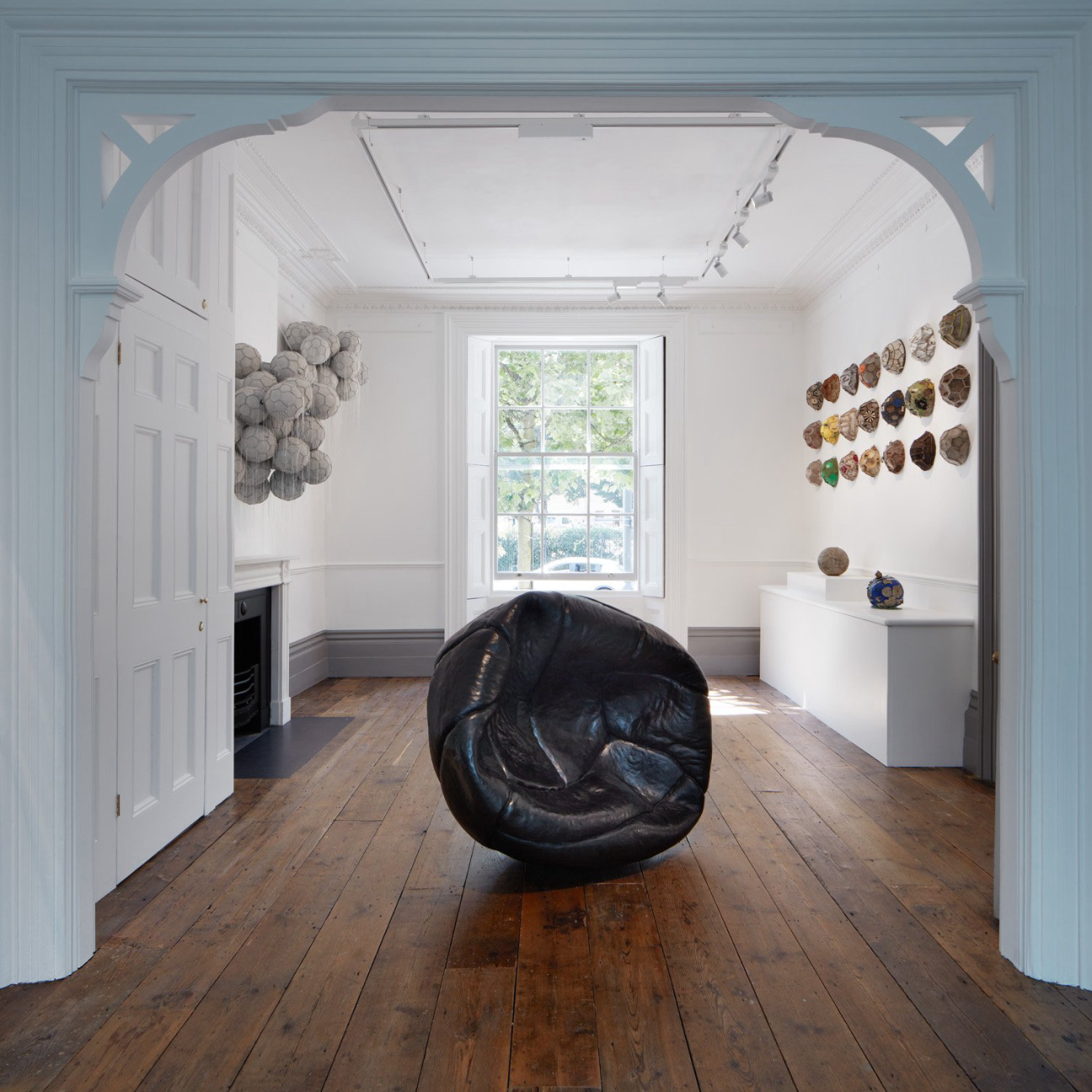
In the summer of 2021, London art critic Eddy Frankel inaugurated Oof, his new gallery, by appearing on the city’s six o’clock news with the legendary footballer Ledley King.
Shortly after the broadcast, King—revered in football but a stranger to the art world—glanced at a pristine sculpture by French artist Laurent Perbos before booting it across the gallery floor with his famed right foot.
“Ledley, please don’t kick the art!” Frankel squeaked. (Perbos’s sculptures have recently fetched upwards of €5,000 at auction.) King shrugged. “Sorry… It’s instinct.”
Why were Frankel and King sharing airtime? Because Oof is based within the stadium of Tottenham Hotspur, the historic football club for whom King played 268 times. While all the work on display is for sale, Oof offers a highly curated program. Recent exhibitions have tackled complex issues like homophobia and racism in football. (Last November, the gallery launched a range of football shirts designed by Hank Willis Thomas, an artist well-known for his pointed evocations of America’s history of slavery.) During gallery openings, London’s culture vultures descend in a thousand shades of Acne Studios. But, on match days, the space fills with fans in Stone Island and Fred Perry, whose approach to the art might be more akin to that of King’s.
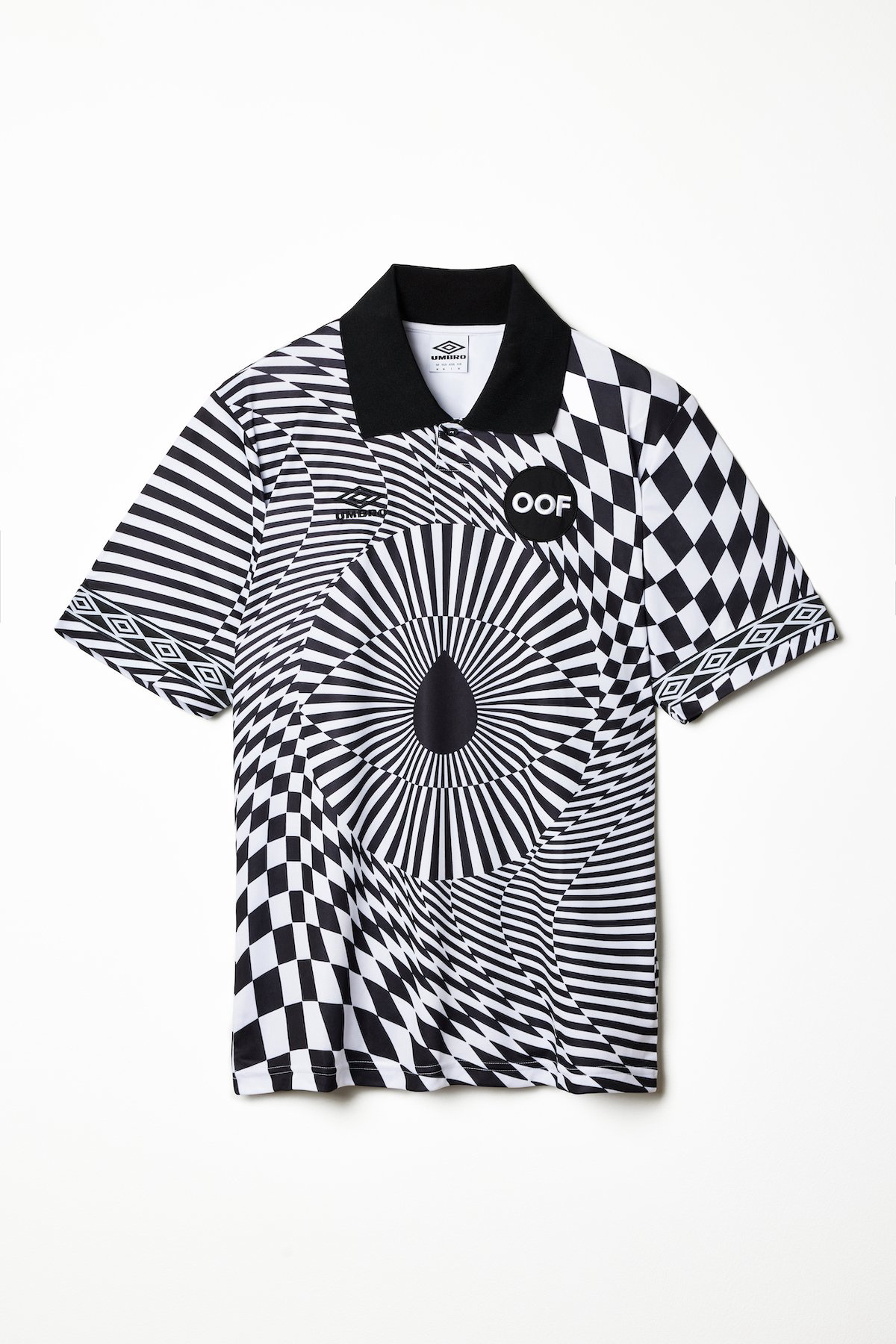
“More than 90 percent of Oof’s visitors have never been to a contemporary art gallery,” Frankel explains. “This is their first exposure to what can be an exclusionary, difficult and alienating world.”
Oof is at the forefront of a new generation of galleries—what some are calling the Young British Gallerists—that have reinvigorated London’s commercial art scene after the pandemic. “There is definitely a new wave,” says Alice Amati, a former sales executive at David Zwirner who, in June 2023, opened her eponymous space in a former art supplies shop in Fitzrovia.
“It is a phenomenon, and it is specific to London,” Amati says of the scene. “In New York, all the galleries seem to be closing. Here, a whole new gallery scene has emerged in just a few years.”
“It’s flourishing,” agrees Hannah Barry, founder of Bold Tendencies, a not-for-profit arts organisation in Peckham set to reopen this year. “Covid created unique conditions that allowed this fiercely independent sector to thrive.”
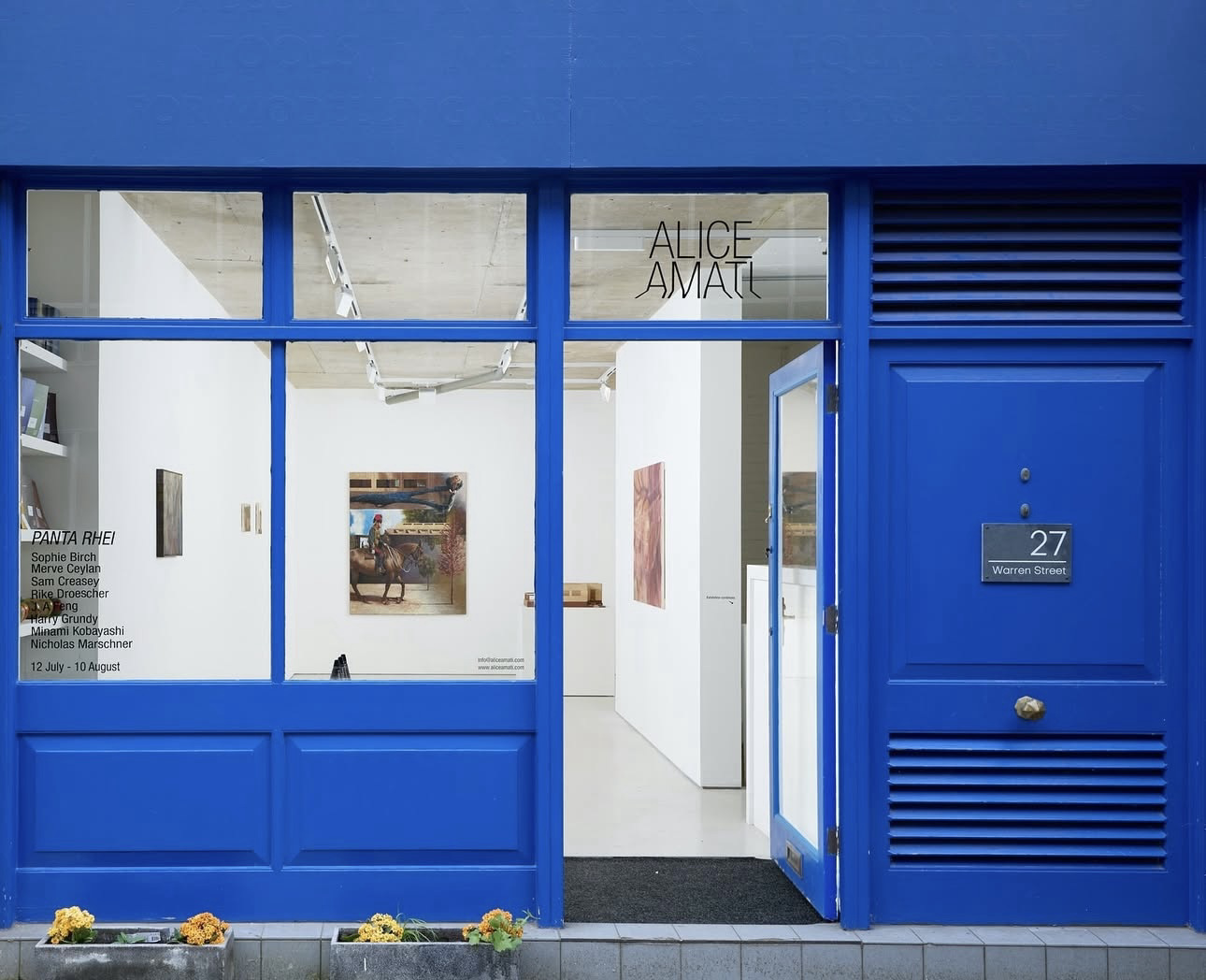
By taking advantage of business rate relief schemes, occupying newly vacant high street real estate and harnessing council support for cultural initiatives, galleries like Amati, Oof, Harlesden High Street, Vardaxoglou Gallery, Ginny on Frederick, Rose Easton, Emalin, Sherbet Green, Neven, and Guts Gallery are showing a new type of artist, selling to a new type of collector and perhaps even reaching a new type of audience.
These spaces have thrown their chips in with early-career practitioners who arrive without reputation or fanfare. A world apart from Mayfair, the historic art district in the city’s monied center, they are rooted in Hackney, Southwark, Lewisham, Haringey, and Brent—parts of London that the old guard has traditionally feared to tread—or in unlikely spaces within Soho, Bloomsbury, and Fitzrovia, where they occupy what were once cubby hole shops, factory floors, workshops, pubs, greasy spoons, desecrated churches, and abandoned offices.
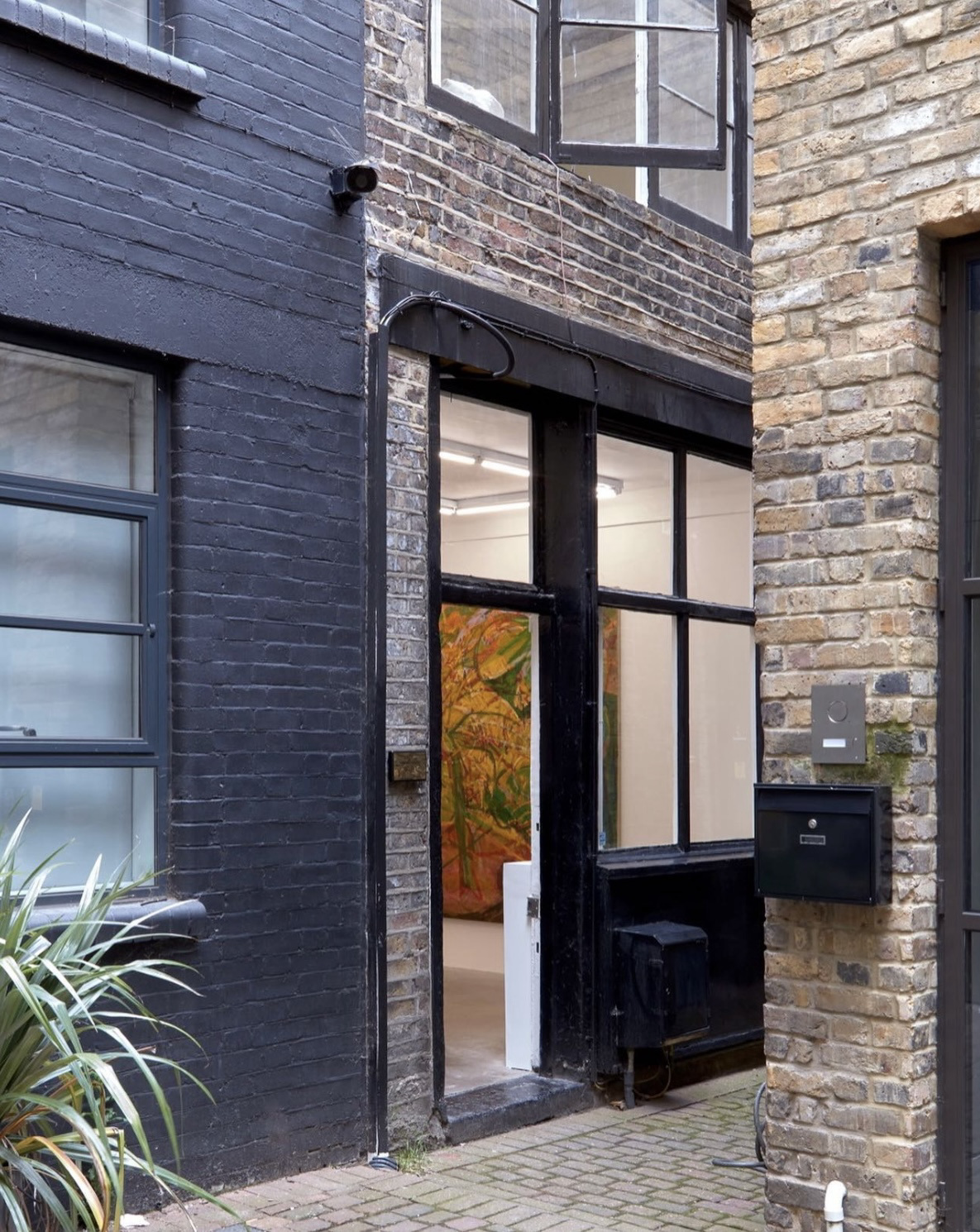
“It’s an astonishing shift,” says Jeremy Epstein, co-owner of the well-established Edel Assanti gallery in Fitzrovia. “The London economy was hit hard by Brexit, Covid, and inflation. Yet new galleries continue to open every year.”
Epstein founded London Gallery Weekend to draw visitors back to the art scene post-pandemic. Its 2025 edition, opening June 6, will feature 123 galleries, 13 of which are first-time participants. The 2024 iteration welcomed 15 new additions. “This phenomenon is driven by a young generation who feel they have something to say,” Epstein adds. “They want to do things differently, they have a unique perspective, and they want to showcase their artists in their own way.”
Amati agrees. “We all saw how the old gallery system operated,” she says. “It’s something we wanted to change. We are shifting the focus back to the artists.”
Sam Will is director of the Shop, an emerging gallery platform launched by prominent gallerist Sadie Coles, which, on Jan. 18, will launch a much-anticipated sound piece titled ToonsTunes (Four Pathetic Movements) and comprised of lo-fi audio loops from archival Donald Duck cartoons by the young Italian artist Diego Marcon.
Will sees parallels with the Young British Artists movement of the 1990s. “The YBAs emerged from Thatcher’s Britain. Today’s crop comes from austerity Britain,” he says. “There are definitely political and social parallels.”
Jonny Tanna, founder of Harlesden High Street, began his gallery, initially a nomadic pop-up, as a way of moving past a gambling addiction that defined much of his youth. When he launched, the gallery scene felt moribund and conservative, he recalls. “I went to Frieze in 2019 and came away thinking art in London was dead. It felt very dismal, very bleak.”
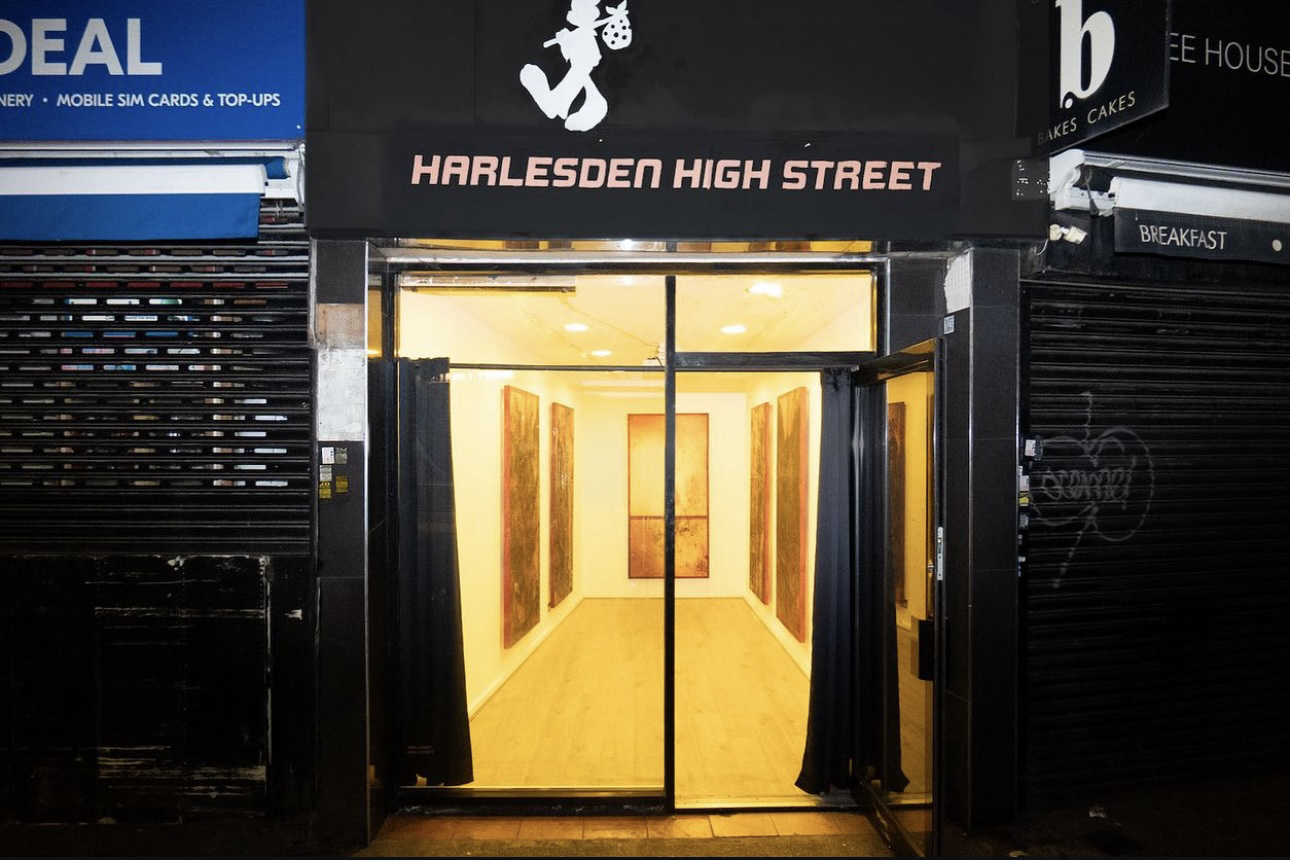
It also felt like a closed shop. “It was a system of cliques,” Tanna says. “There was a lot of politics and hierarchies that kept people on the outside. And then Covid hit, and this boom happened.”
Lockdown gave Tanna the opportunity to establish a permanent space on the high street of Harlesden, his childhood neighborhood, next to what was once a much-cherished purveyor of hot cross buns, a culinary British staple. He calls his gallery “a portal.”
“I’m an island unto myself,” Tanna says. “My artists are a new breed. They haven’t been to art school; they’re often frustrated and see art as a way of realising something new.” Last April, Tanna screened artist Isaac Julien’s 1983 filmic debut, which explores the death of Colin Roach, a young Londoner who was fatally killed after being shot in the reception of a police station.
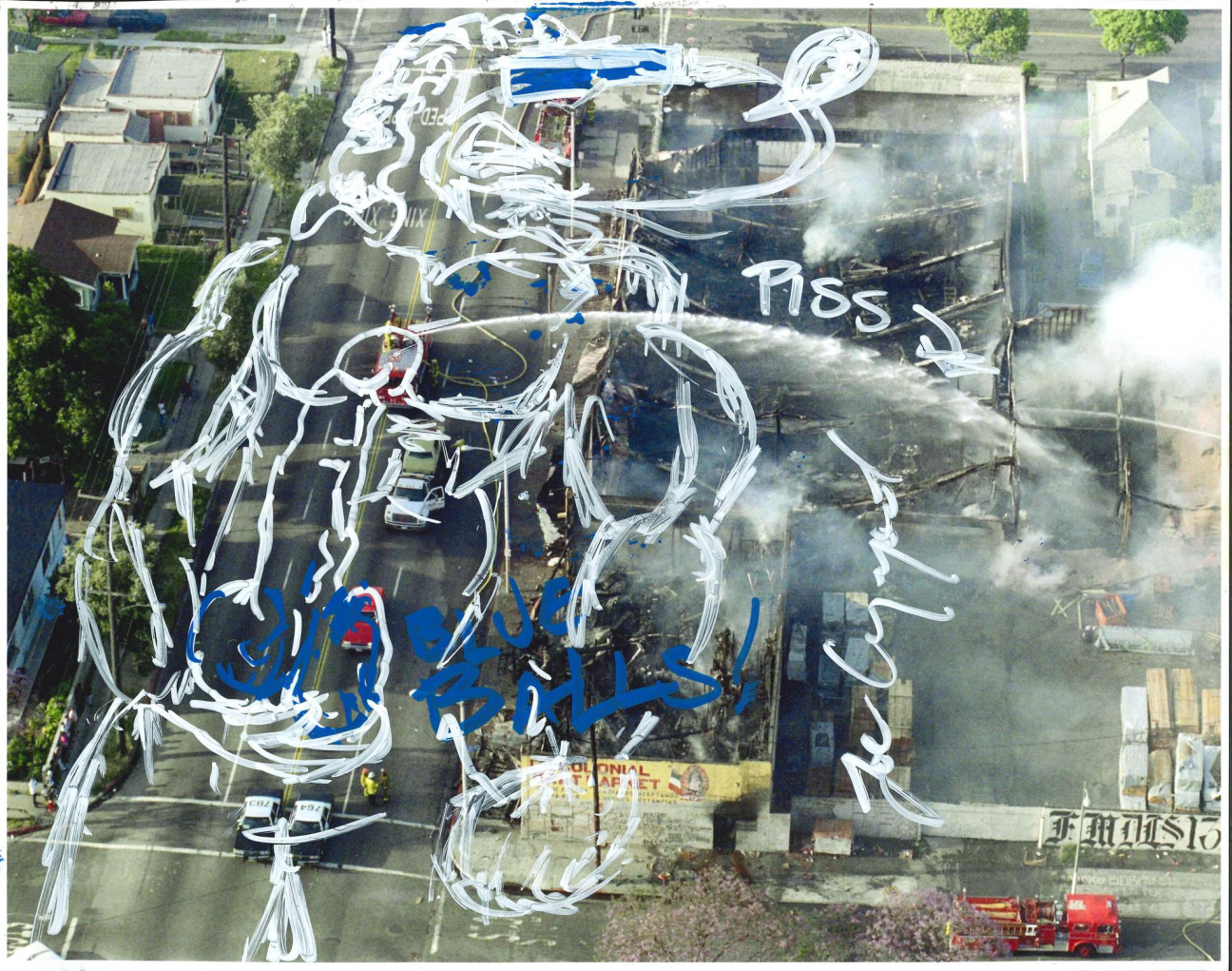
A June 2021 exhibition featured shrines to Bibaa Henry and Nicole Smallman, two local sisters murdered in a nearby park during the first lockdown. “We sold that work for £10 or £20,” Tanna says.
But, as well as bringing in visitors from the pavement, Tanna has cultivated a new collector base. “We make a lot of sales through Instagram,” he says. “I speak with tech bros who don’t have a formal art education. But they understand the work.”
The data supports the take. According to the 2024 Art Basel and UBS Art Market Report, dealers with a turnover under $500,000 saw an 11 percent increase in sales in 2023, while blue-chip galleries with over $10 million in turnover experienced a 7 percent decline. Gen X buyers outspent other demographics in 2023 and 2024.
After leaving his job with a dealer at the onset of Covid, Alex Vardaxoglou founded Vardaxoglou, opening his first show in November 2020—just as London was plunged into another lockdown—in the front room of his flat. “There was no risk,” he remembers. “I was able to set up with very little to lose.” Two years later, he would move the gallery to Soho, setting up shop in the offices of a folded insurance company.
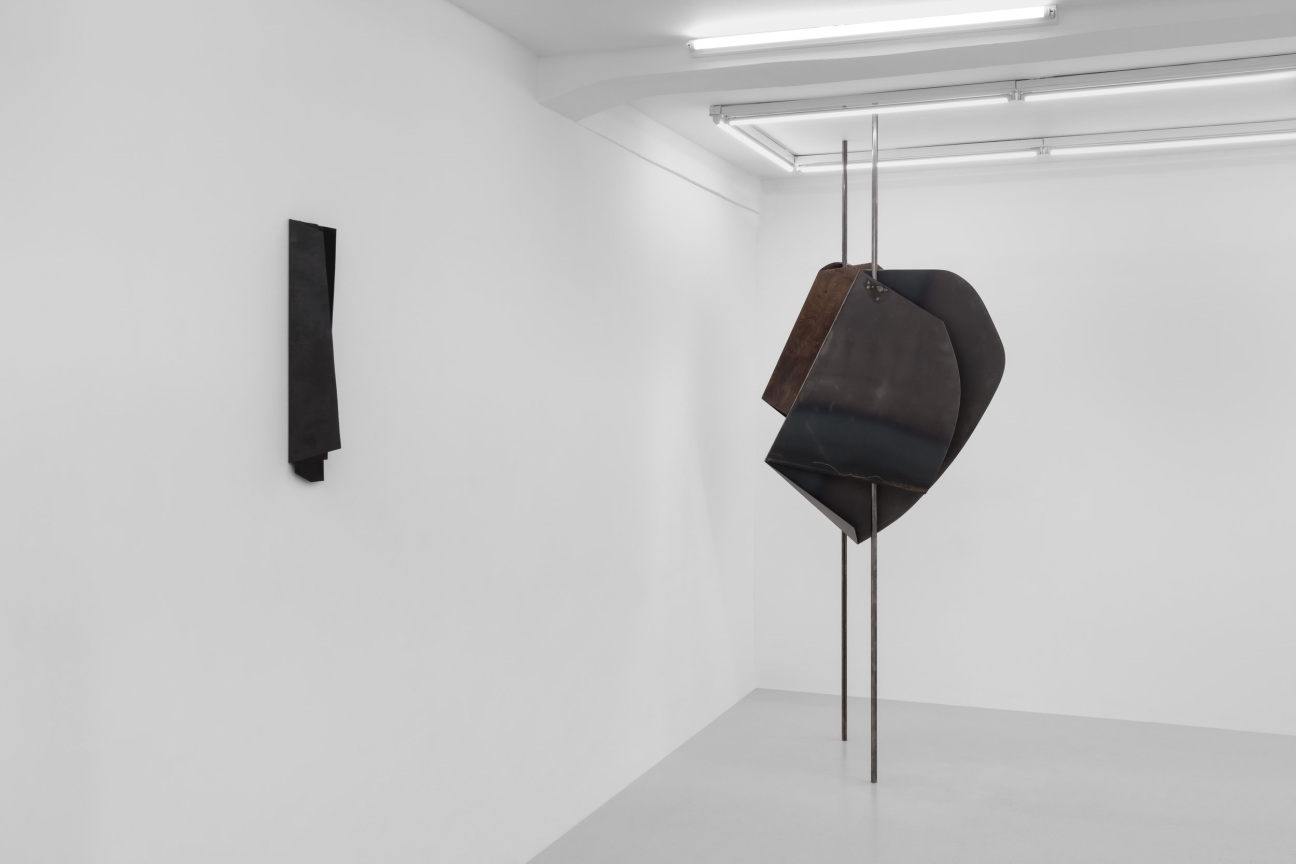
Vardaxoglou has carved a niche in overlooked British artists from the 20th century; he is currently exhibiting a show of new works by Niamh O’Malley, an unheralded sculptor from the Western wilds of County Mayo who represented Ireland at the Venice Biennale in 2022. To mitigate costs, Vardaxoglou plans to share a booth at Independent in New York with other gallerists this May. “We don’t run a big staff or have to maintain a huge space,” he says. “We are nimble.” Yet he remains cautious about the future. “When we launched, we qualified for a 75 percent business rate relief. Now it’s down to 40 percent,” he says. “Soon, we might be paying full rates. Some gallerists already pay more in rates than rent. The system needs restructuring. It’s not an incentive.”
On Feb. 5, the day before Tottenham plays Liverpool in the semi-final of the Carabao Cup, Oof will open a new series of abstract expressionist paintings by the Polish artist Marcin Dudek. Titled “The Ground Harbours the Soul,” the works recall the expansive emptiness of Europe’s football stadiums during the pandemic. What will the frenzied hordes make of these sorrowful, fevered memories? Will they reflect on the meaning of life before, once again, becoming immersed in the game and lost in the crowd?
“We've always said, ‘If, out of every 1000 visitors, we convert even one into an art lover, then Oof will have been a success,’” Frankel concludes. “I reckon, so far, we have managed to convert at least two. So… not bad.”










 in your life?
in your life?

